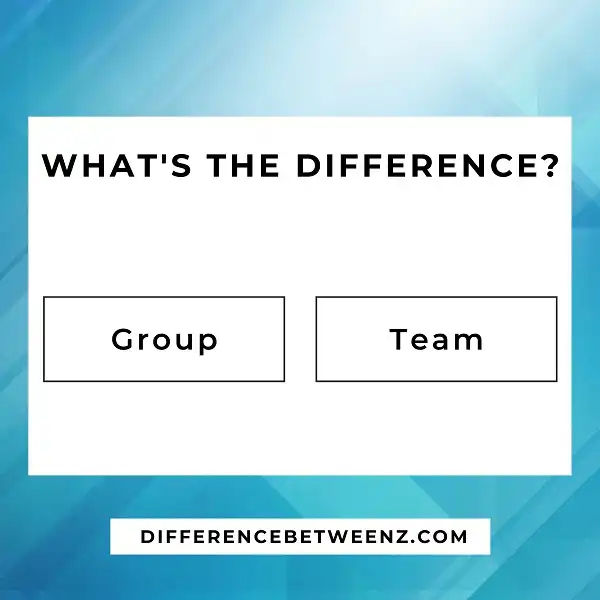Group Vs. Team
What is the difference between group and team? Today, most of the work that is done in any type of organization is done in teams.
Although the individual personality of the employees is important, their effectiveness often depends on which team they are part of.
In a given team there may be several groups in which the members work and follow a leader in the pursuit of a common goal.
Below this post is all about the difference between group and team.
Difference between group and team
The terms “group” and “team” are used quite frequently when discussing modes of organization.
Many know the difference between one mode and another, but there are those who do not fully understand it.
If you have doubts about it or just want a little more information, continue reading, because then we explain everything you need to know about this topic.
Difference between group and team
Group
It is a gathering of people who work, interact and cooperate with each other to reach a common goal at a specific time.
The identity of the members of the group is taken individually, but the members share information and resources with other members of the same group.
As a form of organization, groups are formed according to interests, beliefs, and experiences that the members have in common; as well as the fields in which they develop and the principles they share.
In this way they can be coordinated in one of two types of groups:
Formal group: they are created by the manager of the organization to carry out a particular task.
Informal group: it is formed in a natural way to satisfy the social or psychological needs of the members.
Examples: ethnic groups, circles of friends, the crew of a ship, the staff of an airline.
Team
It is a group of people who are gathered together in order to reach a common goal in a stipulated period of time.
The agenda of a team is “everything for one and one for all“. In addition to sharing information, team members also share responsibility for the task being performed.
Each member of a team is equally responsible for the final outcome and consequences of their actions.
Members work together to minimize the weaknesses of each individual and encourage individual strengths.
Finally, the key to team functioning is in the “synergy”; that is, that the greatest benefits are gained when members are able to achieve things individually.
The three characteristics that all good equipment must have are cohesion, confrontation, and collaboration.
Examples: baseball team, medical team, and administrative team.
For Further Reading
- Journalist vs. Reporter
- Foreign Policy vs. Domestic Policy
- Executor vs. Trustee
- Culture vs. Tradition
- Christians vs. Muslims
- Capitalism and Democracy
- Nation vs. Country


